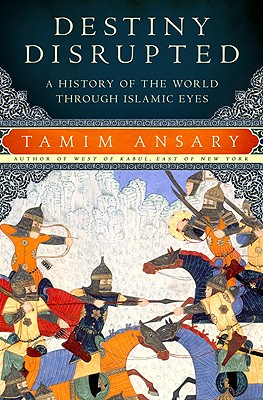By Pamela Toler, W & M Contributor

I’ve been studying Islamic history for a long time now. (Stops to count on her fingers. Thirty years?? Really?? Counts again. Dang. )
Last year I discovered the best general book on Islamic history I’ve ever read: Destiny Disrupted: A History of the World Through Islamic Eyes by Tanim Ansary. I underlined as I read. I annotated. I put little Post-It tabs at critical points, the durable ones so I could go back to key arguments in the future. In short, I had a conversation with that book.
An Afghani-American who grew up in Afghanistan reading English-language history for fun, Ansary argues that Islamic history is not a sub-set of a shared world history but an alternate world history that runs parallel to world history as taught in the West. In Ansary’s account, the two visions of world history begin in the same place: the cradle of civilization nestled between the Tigris and the Euphrates. They end up at the same place: a world in which the West and the Islamic world are major and often opposing players. But the paths they take to the modern world, or more accurately the narratives that explain how “we” got to the modern world, are very different. Ansary’s book unfolds those two narratives side by side in clear, lively, and often amusing prose. I found his conclusions compelling.
If you’re only going to read one book on Islamic history, do yourself a favor: chose Destiny Disrupted. Then let me know what you think about it.
About the author: Pamela Toler is a freelance writer with a PhD in history and a large bump of curiosity. She is particularly interested in the times and places where two cultures meet and change.
This post previously appeared in History in the Margins.
